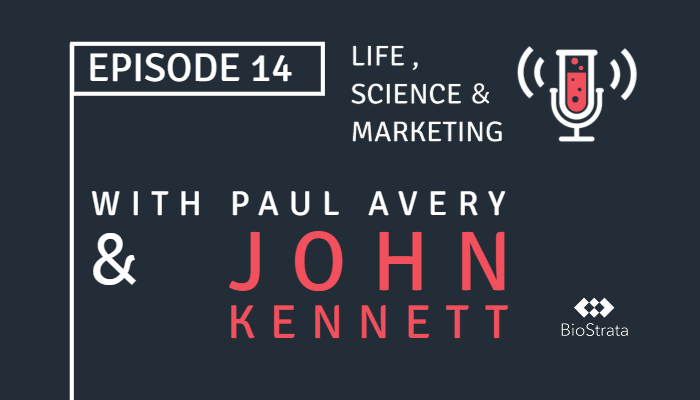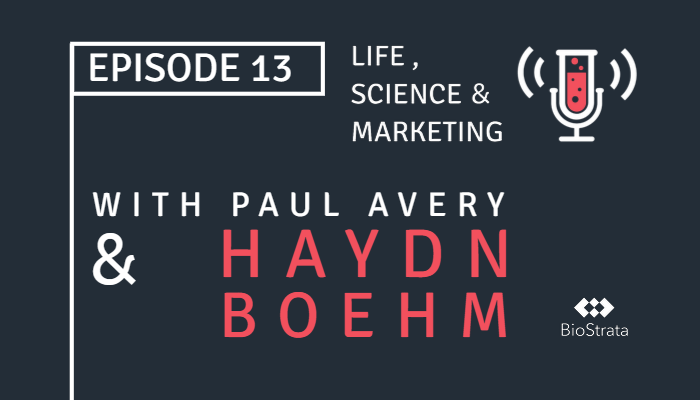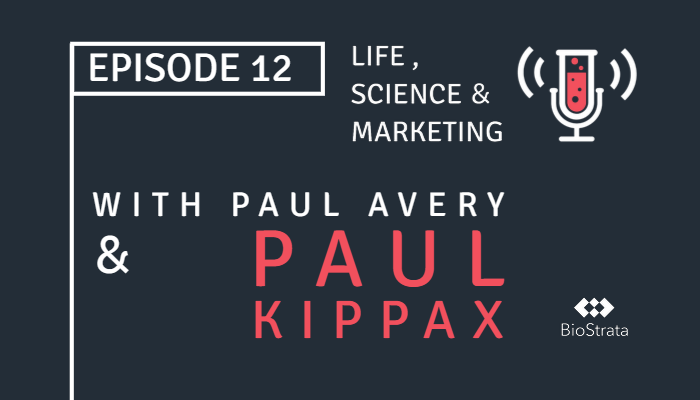It’s no secret that the content marketing environment is constantly evolving. If anything, since the start of the covid pandemic we’ve arguably seen some of the biggest changes in recent years. Now, an already noisy digital space has become almost deafening, making it much harder to get your content seen and communicate your messages. But that’s not all, we’re seeing the ways people consume content pivot between different formats meaning it’s more important than ever to monitor marketing trends and understand what will resonate with your target audience.
Arguably, additional challenges in life science content marketing mean monitoring general marketing trends doesn’t always give you the insights you need. For example, video is undoubtedly more popular than ever before, but creating a 10-second video that communicates a complex instrument that pushes the boundaries of research in technical application areas is very different to creating a short video promoting a food subscription service.
At BioStrata we continually monitor trends in life science content marketing and monitor how content is engaged with. Here we explore four up-and-coming life science content marketing trends to capitalise on and unlock untapped opportunities.
Trend #1: Videos
The buzz around video isn’t going anywhere. There are, understandably, some concerns that video has been overdone at this point, with webinar fatigue hitting many hard around a year ago. And yet, if you don’t include video in your content marketing efforts, you could actually be missing out on an opportunity to differentiate your life science marketing from the rest and engage with more prospects. In fact, metrics show that 94% of people watch explainer videos to better understand a product, service, brand or business better, and 86% of marketers who use video have reported increased lead generation as a result.
Videos can be a valuable tool at each stage of the sales funnel:

Metrics show that effective videos targeted to a specific audience could be a key part of your life science content marketing strategy. If you look to include video, there are a few things to keep in mind when determining the best platform, type and length. For example, you may find that a graduate scientist is most likely to engage with animations of no more than 30 seconds on social media. In contrast, someone in senior management is more likely to respond to a personalised video embedded in an email.
Trend #2: Personalised content
Not to be confused with account-based marketing (ABM), personalised content marketing isn’t very common in the life sciences yet. So, what is personalised content? Simply put, it’s content that is tailored to individual buyer personas (or audience profiles) based on data collected about them, such as location, devices used, job title etc.
Currently, in the life sciences, many campaigns take a one-size-fits-all approach or at least try to appeal to more than one persona. The result? A less effective campaign, with 42% of prospects frustrated by impersonal content. The good news is that there’s still time to be an early adopter and reap the rewards of personalised content marketing if you act now.
To start, audience segmentation and buyer persona development are key. Yes, these activities can seem like a rather hefty investment, but if done well will set up your marketing campaigns for success. Segments such as geography, vertical market, industry vs academia and level of seniority can let you really tailor your communications. Then, developing personas, such as Senior Research Scientist Sally who works at a biotech, based on data and input from sales and customer management teams will help you develop a rounded semi-fictional representation of that type of target customer.
Completing these activities can feel daunting if you haven’t done them before. If you aren’t sure of where to start or how to get buy-in from internal stakeholders, it could be worth connecting with a life science specialist marketing agency with proven experience.
Trend #3: Life science application stories
It is a truth universally acknowledged that a scientist in search of a solution will look for proof points and data. And this approach makes sense. The instruments in a laboratory can make or break research, while those in a pharmaceutical testing facility can be the difference between complying with regulations or needing to throw away hundreds of thousands of dollars’ worth of medicine. It’s therefore important to provide evidence that the product you’re selling successfully addresses challenges similar to the ones your prospects are experiencing.
Application stories that faithfully report studies demonstrate the suitability of your product for specific applications while showcasing its benefits. Before starting a study to produce data for your application story, consider your buyer personas and commercial targets. For example, your quadrupole mass spectrometer might already be installed in many food testing laboratories, so now, you might need to release an application note showing its suitability for use in wastewater testing.
There’s more than one way to tell an application story, some report methodology while others don’t. The key is to know what will resonate best with your target audience, and in either case, write in an educational way. Any attempt to be overly promotional can make these pieces lose some credibility.
Trend #4: Case studies
Perhaps the only thing better than data is data from a reliable third party. Case studies from customers, particularly those that are well-known and highly regarded in their industry are the best proof-points possible with 88% of customers looking for social proof before making a purchasing decision. Depending on which sector you’re in, we completely understand that case studies can feel impossible because of how sensitive a lot of the data is. But white label case studies that don’t share your customer’s name and retract some of the data can still be incredibly valuable.
Case studies don’t only show that your product works and what its benefits are, they can also create a fear of missing out as prospects will see how their competitors are already pushing the boundaries and gaining a competitive advantage. For example, if your customer can show they’ve increased laboratory throughput by three-fold, the chances are their competitors will want to achieve the same.
The best case studies work for both you and your customers by highlighting their services and capabilities in a positive light. To produce an effective document, you need to work with your customer to truly understand how your product benefits them. And don’t shy away from any challenges they had. If there was a stumbling point during the installation, but your customer support team helped them overcome it, that’s nothing to hide.
Staying on top of trends is only part of the challenge in life science marketing
Ensuring your life science content marketing strategy is effective and stays ahead of the curve can feel like a full-time job in itself. And that’s not the only challenge. It could be that some, or all, of the content types and story styles discussed here are new for you and your company. Investing resources into trying new content approaches often requires buy-in from internal stakeholders and may require additional expertise. With this in mind, it can often feel easier and safer to stick with what you know and keep your content marketing strategy the same.
Yet as Albert Einstein once said, “insanity is doing the same thing over and over and expecting different results”. So if you’re interested in untapping new opportunities and taking your marketing results to the next level why not trial one or two of the trends highlighted above?
Working with a specialist life science marketing agency can give you access to the resources and expertise you need to level up your content marketing and help ensure you’re always kept up to date with the latest trends.
At BioStrata, we have decades of life science content marketing experience, from strategy creation to execution. Learn more about how our results-driven content team can provide you with the resource and expertise you need.





